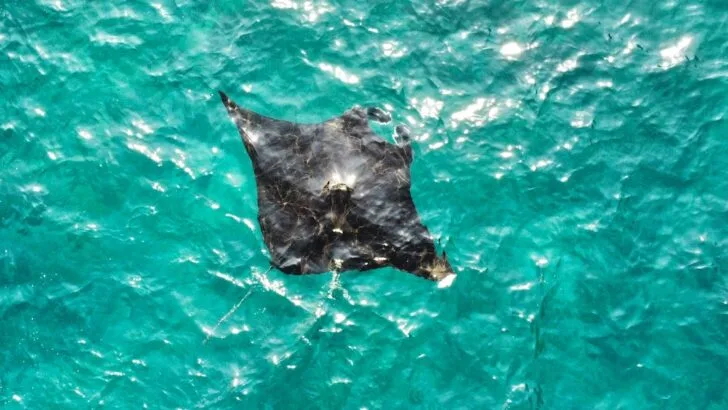Has swimming with manta rays been on your bucket list for a long time? You’re in luck, as snorkelling tours to Manta Bay Nusa Penida give you the chance to see these gentle creatures up close.
Located on the northwest coast of Nusa Penida, this popular snorkelling spot is the go-to destination for the island’s manta ray snorkelling tours.
It was one of the first places I visited on my Nusa Penida itinerary – and in total, I saw 5+ manta rays.
With a wingspan of up to five metres, manta rays are gentle creatures that feed on plankton pushed into the bay by ocean currents.
In the following blog post, I’ll talk honestly about my experience at Manta Bay Nusa Penida so that you know exactly what to expect on the day. I’ll also walk you through how to book your tour.
Disclosure: This post includes affiliate links. If you decide to click through and make a qualifying purchase, I will receive a small commission at no extra cost to you – thanks for your support.
QUICK INFORMATION
Best time to visit: May to September
How to visit: Manta Bay snorkelling tour 🤿
How to get to Nusa Penida: Fast boat from Sanur (Bali)🛥️
Should You Visit Manta Bay or Manta Point?
Manta Bay should not be confused with Manta Point, another location in Nusa Penida.
Manta Point is only accessible by divers – it’s a deep-water diving site, where manta rays are often spotted while circling past plankton feeding stations around the island.
If you want to visit Manta Point, you need to be a certified diver already. Then, you can sign up for this diving tour for certified divers, which visits Manta Point (weather permitting).
I met several divers who visited Manta Point. They all saw manta rays. However, they found the ocean currents very strong. Therefore, I recommend that you only visit if you have plenty of experience.
Manta Bay is a snorkelling site, not usually visited by divers. When they pass through, manta rays hover nearer the surface of the ocean, making them more visible for snorkellers.
Where is Manta Bay Nusa Penida?
Manta Bay is on the northwest coast of Nusa Penida, an island near Bali.
You don’t necessarily need to be in Nusa Penida to visit the site: you can sign up for a Manta Bay snorkelling tour from Bali.
Snorkelling tours also depart from Nusa Lembongan, a neighbouring island.
However, it’s quicker and easier to visit directly from Nusa Penida; they depart from Toyapakeh Harbour on the west coast and only take 15-30 minutes to reach the snorkelling site.
Manta Bay is only accessible by boat, so you must book a snorkelling trip to get there.
There are two main types of snorkelling tours:
- The morning Manta Bay tour: this features three snorkel sites.
- The combined tour, which does the same but adds on an afternoon tour of west Nusa Penida (Kelingking Beach, Angel’s Billabong and Broken Beach).
What are the Chances of Seeing Manta Rays in Nusa Penida?
A manta ray sighting is never 100% guaranteed at Manta Bay.
Manta rays are wild animals whose habits depend upon the ocean currents, food availability, and many other factors.
Therefore, you might not get to see a manta ray during the short window that your boat visits the site.
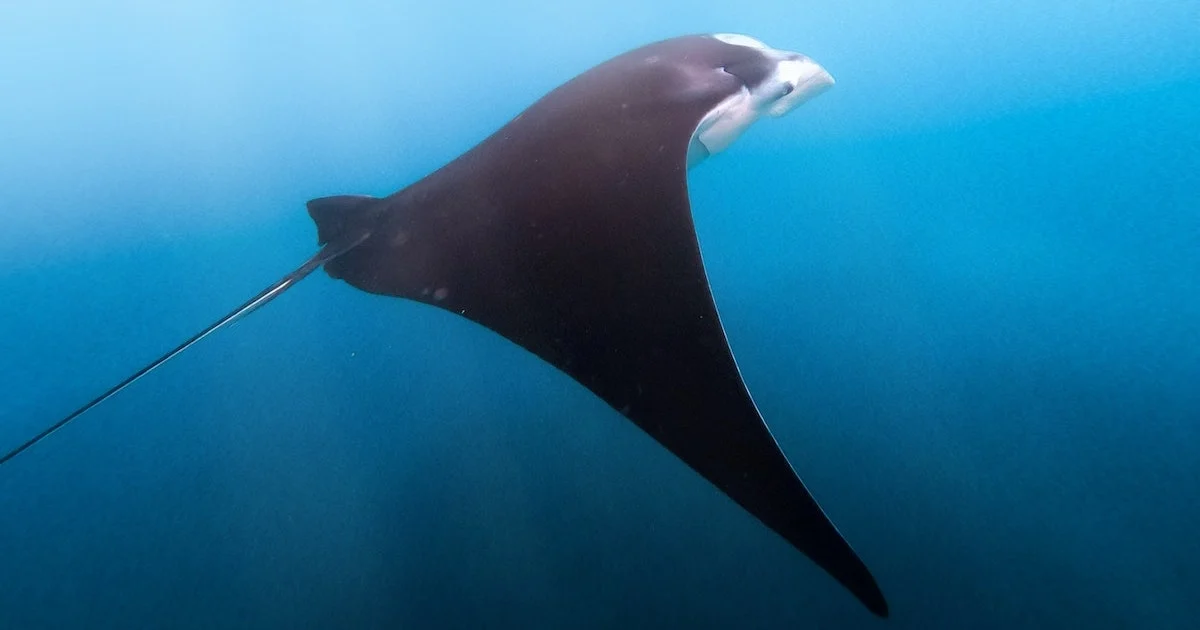
Most people have a successful sighting of one or more manta rays. I was lucky enough to see 5+ manta rays in one go.
However, some unlucky people will walk away without a glimpse.
It’s still worth trying your luck, though – this is one of the best chances you’ll get around Bali.
When can you see Manta Rays in Nusa Penida?
There’s no so-called ‘manta season’ in Nusa Penida because conditions are fairly optimal year-round.
However, the best time to see manta rays is in late spring or summer, between May and September.
During this time, the process of ‘upwelling’ occurs, where cold water rises to the surface of the ocean.
This causes nutrients such as plankton to float. Subsequently, manta rays appear nearer to the surface in search of food.
What to Expect at Manta Bay in Nusa Penida
Most Manta Bay snorkelling tours depart around 8-9am because the best chances of seeing manta rays are during the morning.
They usually provide snorkelling equipment and flippers. However, if you have your own snorkelling equipment, I suggest that you use it.
My snorkelling mask was well-worn and a little faulty.
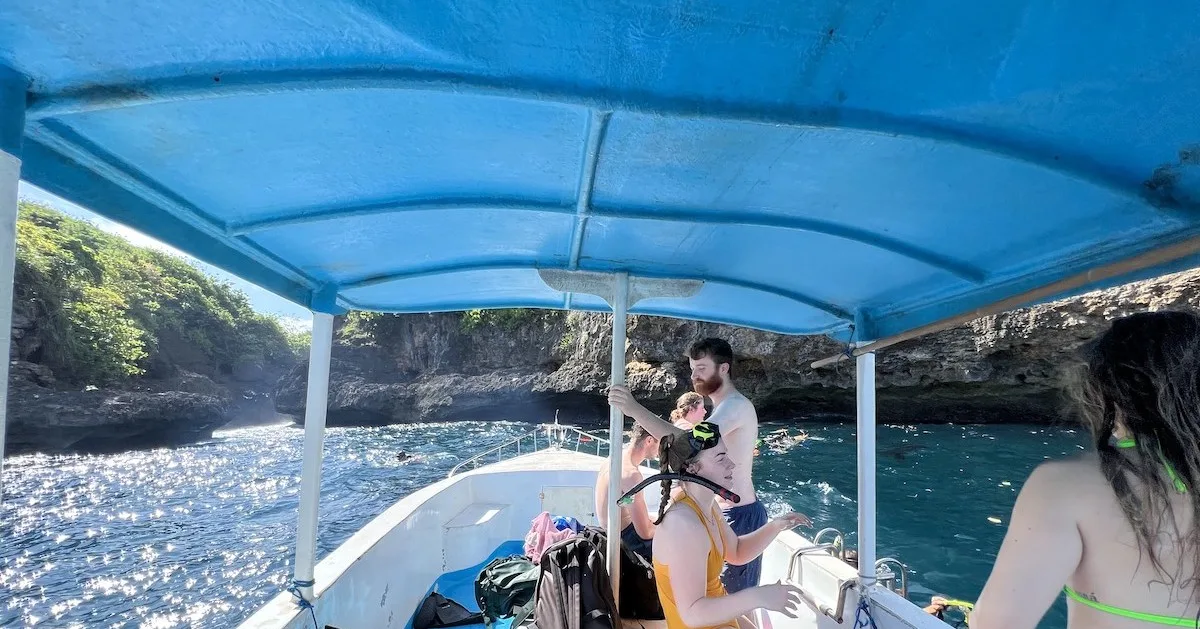
My snorkelling tour boat
The snorkelling tours usually visit a number of other snorkelling sites along the west coast of Bali, including Gamat Bay, Crystal Point and Mangrove Point. However, Manta Bay is the first visit.
After a very bumpy ride out to Manta Bay, I was quite shocked by just how many boats there were at Manta Bay.
Unfortunately, the more Nusa Penida grows in popularity, the worse this gets. There were nearly 15-20 boats in the area, and so much commotion that it was easy to lose track of where your boat was.
Being exposed to the Indian Ocean, Manta Bay is renowned for its poor sea conditions: it’s prone to strong currents and waves.
I really recommend that you wear a life jacket if you’re not a confident swimmer or nervous about snorkelling.
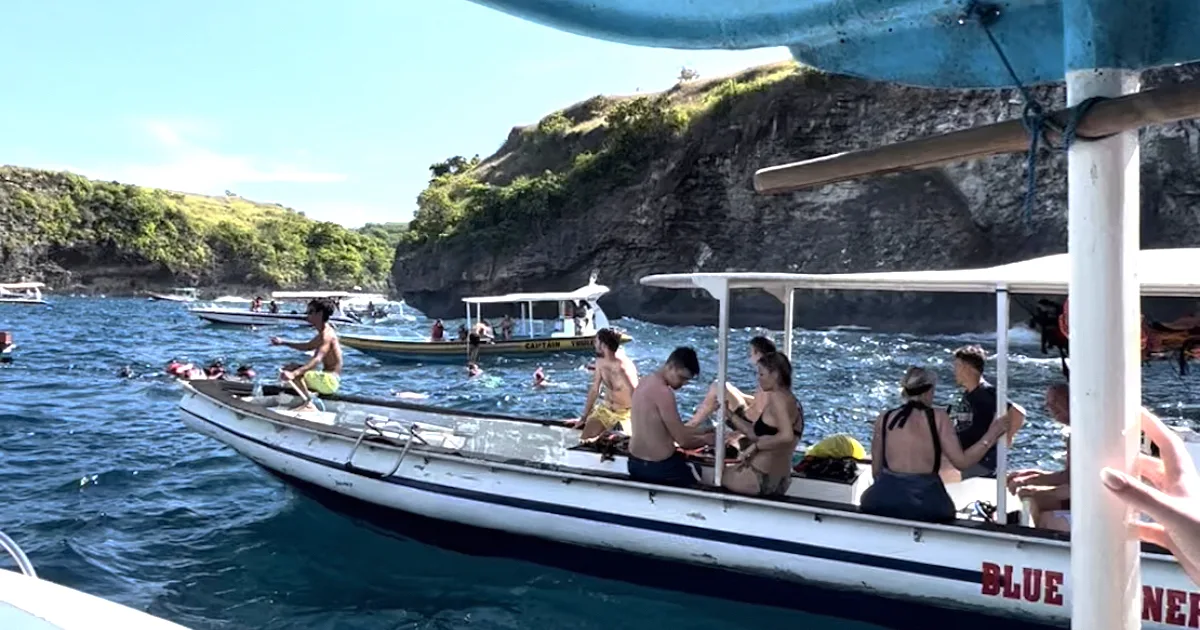
It’s a deep-water site, so you won’t be able to see or touch the bottom of the ocean. This can be nerve-wracking!
Due to the choppy conditions, I ended up developing sea sickness. Therefore, it’s best to take sea sickness tablets 20 minutes before you board the boat.
What to Take To Go Snorkelling at Manta Bay
Here’s a quick packing list that you can use for your trip:
- Dry bag – to keep your belongings dry.
- Sea sickness tablets.
- Snorkelling gear (if you have it).
- Underwater camera (if you have it).
- Towel
- Change of clothes and/or cover-up
You should arrive at the port already wearing your swimwear.
You may need to wade through seawater to reach the boat, so sea shoes or sandals will be helpful.
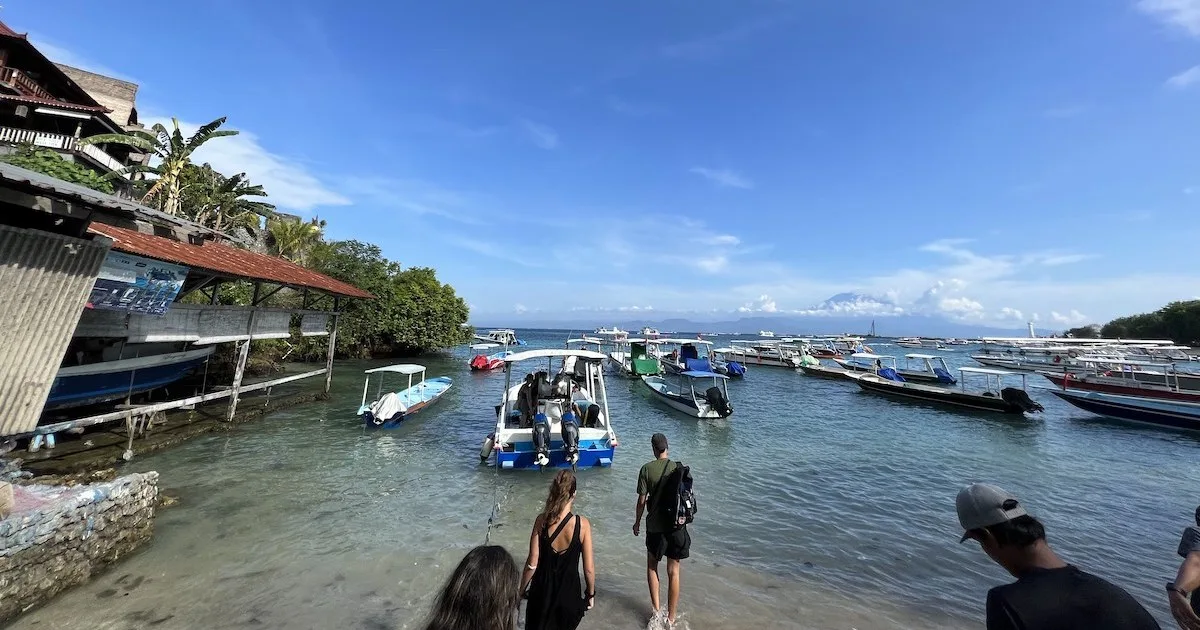
I hope you found my guide to visiting Manta Bay helpful! Here’s some suggested reading to help you plan the rest of your trip:
- Nusa Penida itinerary (1-4 days) – start here!
- How to get to Nusa Penida (from Bali, Lombok and more)
- The top 5 Nusa Penida snorkel spots
- Which is the best beach in Nusa Penida?
- The 10 best resorts in Nusa Penida
FAQ
The best places to see manta rays in Bali are at Manta Bay and Manta Point in Nusa Penida, where ocean currents carry plankton to the shores. Manta rays are often spotted near the surface, feeding on the plankton. Manta rays are often spotted around the shores of Nusa Lembongan too.
You can snorkel with manta rays at Manta Bay in Nusa Penida. Manta Point is a diving site where manta rays are often spotted.
While you can snorkel or dive with manta rays in one day in Nusa Penida, several days is ideal to see other sights on the island, such as Kelingking Beach, Diamond Beach, and Suwehan Beach.

